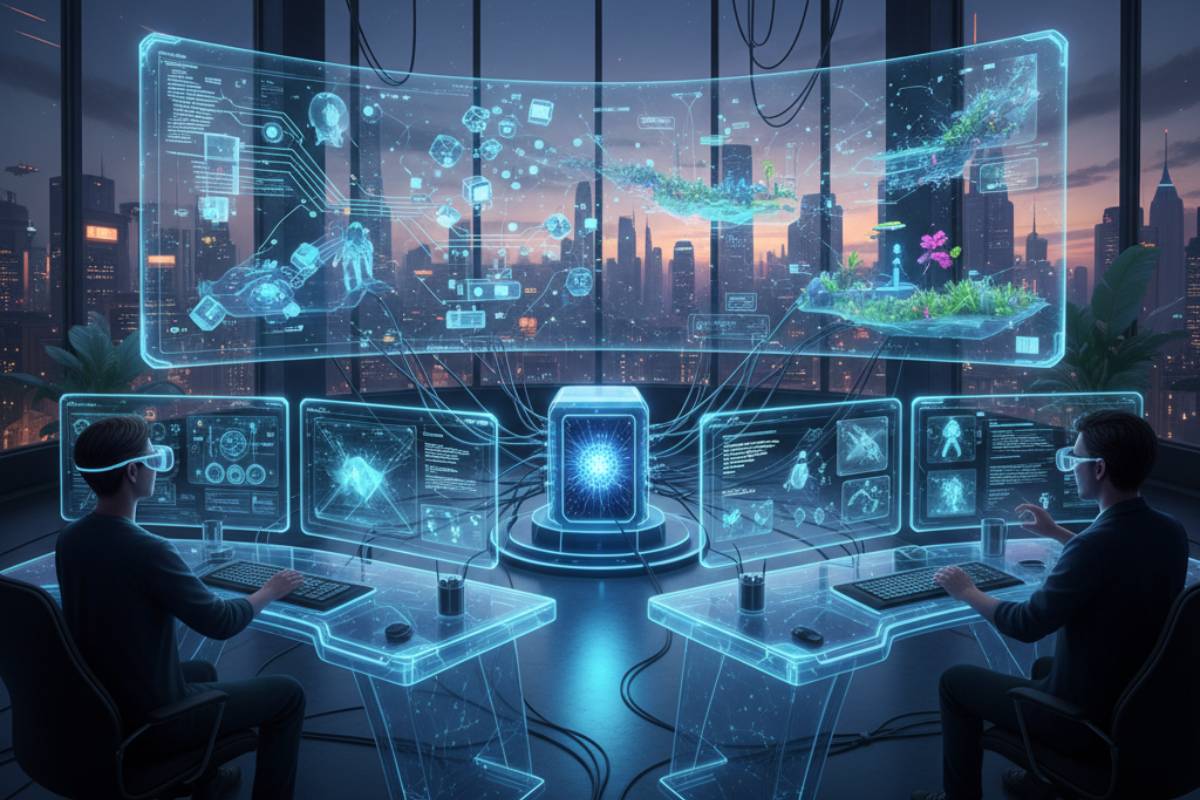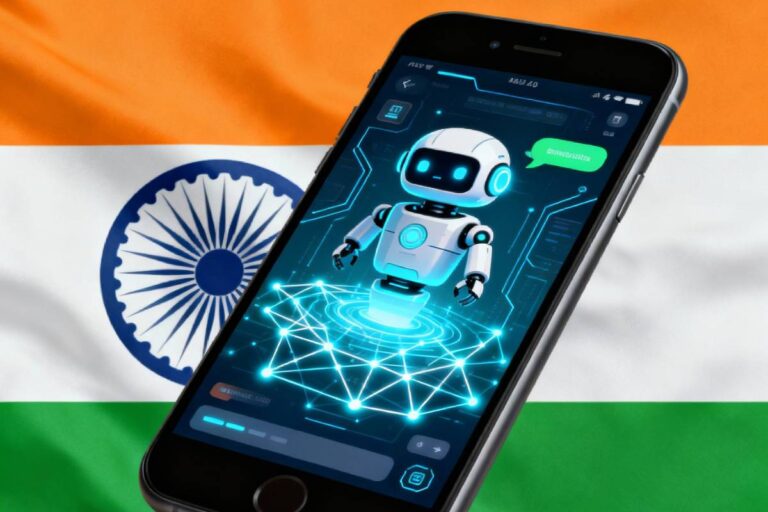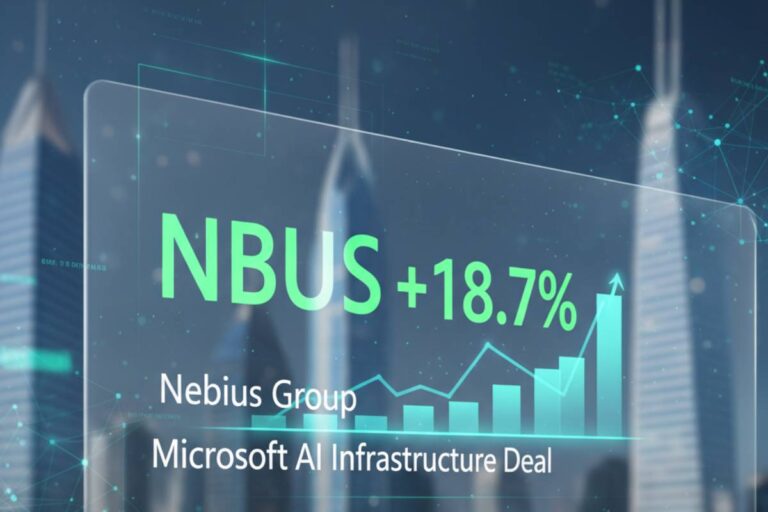The gaming industry is about to change in a big way. What began as simple tests with AI is now the foundation of modern game development. It has changed the way studios make, test, and deliver interactive experiences to millions of players around the world.
The Numbers Speak for Themselves
It’s not just a theory that AI is changing the game development industry in a big way. The global market for AI in game development is expected to grow at a stunning 34.3% compound annual growth rate, from $3.2 billion in 2025 to $58.8 billion by 2035. This huge growth isn’t just because of hype around new technology; it’s a big change in how games are made.
A new study of the industry found that 87% of game developers are already using AI to speed up the process of making games. In the meantime, big gaming surveys show that 79% of developers are happy to use AI tools in their work. These aren’t predictions for the future; they’re things that are happening right now that are changing studios from small indie developers to big AAA powerhouses.
The gaming market is worth $372 billion right now, but by 2029, it is expected to be worth $542 billion. A lot of this growth is because AI is being used on more platforms, which makes the games more immersive and personalized, which keeps players playing longer.
Getting rid of obstacles to development
Making Smart Assets
There was a time when it took months of manual work to make game assets. Tools that use AI are changing the way developers think about designing environments. The system uses procedural algorithms to:
- Process style guidelines
- Generate whole scenes, including props, lighting, and terrain details
- Complete tasks that used to take weeks of 3D modeling in just a few hours
Artists aren’t being replaced; they’re being given more power. Creative teams can focus on refining ideas and pushing creative boundaries instead of spending hours on the same tasks over and over. AI does the hard work, and people add the polish and vision.
The Revolution of Procedural Animation
The way characters move has changed, too. AI-powered motion interpolation now makes smooth in-between frames automatically, which used to take a lot of time and effort to do frame by frame. This method of procedural animation makes character movements that are:
- Smooth and dynamic
- Adaptive to real-time gameplay situations
- Responsive to different gaming scenarios
This makes animation technology available to everyone, which is especially good for indie developers. Now, small groups can make animations that used to take whole animation studios.
NPCs That Think
AI’s effect is most clear, maybe, in how non-playable characters act. The days of predictable, scripted NPCs following set paths are ending.
Memory and Learning Systems
Modern AI-powered NPCs can remember how players interacted with them in the past. This means that they:
- Form relationships and grudges that last throughout the game
- Change how they act based on what players do
- Create truly dynamic gameplay, with no two experiences being the same
Some big-name movies are good examples of this change. Enemies remember past battles, change their strategies, and develop their own personalities based on how they interact with players. Every enemy becomes a unique opponent with its own past and reasons for fighting.
Being Smart About Emotions
NPCs today don’t just react; they also feel. Advanced AI systems let characters:
- Show emotions and act like people
- Get angry, sad, or happy depending on the situation
- Form relationships with both players and other NPCs
These characters with high emotional intelligence use reinforcement learning to improve their strategies by trying things out and seeing what works. After a few failed attempts, an AI enemy in a shooter might learn to flank players instead of charging straight at them.
Customization on a Large Scale
Changing the Difficulty Level
AI is making games easier to play by changing the difficulty level in real time. These systems:
- Look at how well players are doing
- Change the difficulty level automatically to keep them interested
- Prevent frustration while maintaining engagement
The game might lower the health of enemies or give you better weapon drops if you’re having trouble. If you’re winning a lot, you should expect tougher opponents and more complicated situations.
Storytelling That Changes
AI-powered procedural storytelling is changing the way stories are told. AI can:
- Make branching stories that change based on what the player does
- Create unique story arcs for each individual
- Generate whole game systems and mechanics based on what players want
Games are moving toward fully procedural experiences where AI creates not only content but also entire gaming ecosystems.
Smart Suggestions
AI algorithms look at how players act in order to make personalized game suggestions. Players benefit from:
- Recommendations based on how they play
- Suggestions tailored to how long they like to play
- Content curated based on emotional responses detected through play patterns
Players don’t have to scroll through game libraries for hours on end. Instead, they get targeted, meaningful suggestions.
Speeding up the development cycle
The Revolution of Automated Testing
AI is changing quality assurance, which has long been one of the most time-consuming parts of making games. Some tools:
- Use pattern recognition to find bugs more quickly and easily
- Simulate player actions in a number of situations
- Flag problems before they become too expensive to fix
AI-powered testing doesn’t just find bugs faster; it also predicts where problems are likely to happen, which lets you fix them before they happen instead of after they happen.
Fast Prototyping
Some platforms let developers make whole game ideas from text prompts, including:
- Complete code frameworks
- Ready-to-use assets
- Fully animated sequences
This unified approach makes it possible for developers who may not have a lot of coding experience to quickly prototype without having to switch between different tools. People with a clear vision and the right AI tools can now do things that used to take teams of experts.
Change Across the Board
Leading the Way in Mobile Gaming
In 2025, mobile gaming is expected to take up a third of the AI game development market. The platform is the best place to test out AI ideas because it offers:
- Easy accessibility for users
- Affordable development costs
- Global reach and availability
Almost two-thirds of people in the world can now get online, which means that AI-powered games can reach a wider audience.
The Action-Adventure Genre Rules
In 2025, action and adventure games are expected to make up a large part of the AI game development market. AI powers all of these games’:
- Smart NPCs with advanced behavior
- Flexible combat systems that adapt
- Procedurally generated environments
Big franchises show how adaptive AI keeps players interested by changing how they respond to their choices and play styles.
The Human Element is Still Important
AI has the power to change things, but it can’t replace human creativity. The best games of the future will:
- Combine the efficiency of AI with the creativity of people
- Use AI for hundreds of different options and technical automation
- Rely on human intuition to make journeys that are emotionally powerful
Game designers aren’t being replaced; they’re getting more power. AI does the hard work of programming, leaving creative people free to:
- Come up with new ideas
- Focus on storytelling
- Improve the player experience
Problems and Things to Think About
The AI revolution is not without its difficulties. More than 60% of developers are worried that AI could make game design less original. There is still a lot of talk about:
- How to keep creativity real while taking advantage of AI’s efficiency
- Balancing automation with creative vision
- Managing the economic pressures that make AI tools necessary
As development costs rise and studios’ technical debt grows, AI tools are becoming more necessary than optional. This is speeding up the adoption of AI. AI inference is getting cheaper and more devices are getting AI, which is making these technologies more accessible to everyone.
The AI-Native Future: Looking Ahead
We’re seeing the start of AI-native game companies. These are studios that were built from the ground up to:
- Use AI in every part of design, development, and operations
- Offer gameplay experiences that have never been possible before
- Shake up the competition with cutting-edge innovations
Multimodal technology will no longer be new by 2025. Games will seamlessly mix:
- Natural language processing
- Player behavior analysis
- Image recognition and generation
- Gesture-based interactions
- Emotional recognition systems
Imagine going into virtual worlds where you can:
- Talk to characters like you would in real life
- Use voice commands to make your own items
- Experience environments that really respond to what you do
As AI tools make game development more accessible, the lines between playing games and making games are becoming less clear. Players are becoming co-creators by using AI to:
- Change experiences to fit their preferences
- Create content that reflects their imagination
- Modify games in real-time
The Change Is Here
The AI revolution in game development is not coming; it is here. Game studios that use AI are able to:
- Launch games faster than ever before
- Reduce development costs significantly
- Achieve greater commercial success
They’re making:
- Worlds that feel more real and immersive
- Characters that are smarter and more responsive
- Experiences that change based on each player’s style
The question for developers isn’t whether or not to use AI, but how fast they can add these tools to their work. The studios that are open to this change today will shape the future of gaming tomorrow.
We are almost at 2025, and one thing is clear: AI is not only changing how games are made, but also what they can be. The new industry that comes out of this change will offer experiences that are:
- More dynamic than anything we’ve seen before
- Highly personalized to individual players
- More engaging and interactive than traditional games
The revolution is real, and it’s changing the way games work, one algorithm at a time.
















